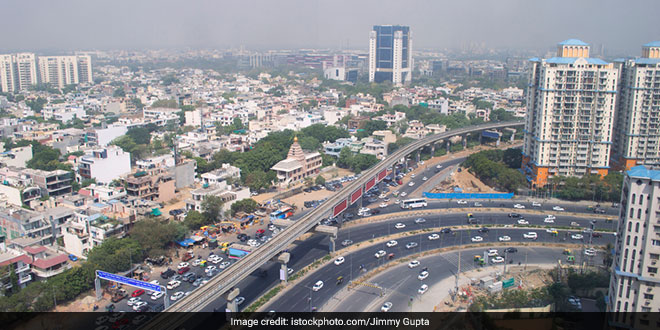Highlights
- In Haryana, Gurugram is the worst affected district due by Coronavirus
- As on June 23, Gurugram has 1,832 active cases of Coronavirus
- In Gurugram, 2,744 COVID-19 patients have recovered
New Delhi: On Tuesday (June 23) evening, the Novel Coronavirus cases in Haryana rose to 11,520 with Gurugram (erstwhile Gurgaon) accounting for over 40 per cent (4,645) of these cases. Of the total active cases (4,844) in Haryana, 1,832 are from Gurugram followed by 1304 from Faridabad. Not just the cases, the district has also reported maximum deaths – 69 of which 39 people had comorbidities. Gurugram is touted as the worst affected districts of Haryana and the numbers back the claim. With the rise in Coronavirus cases in Gurugram, experts fear if the district is on the way of having a COVID-19 crisis just like Delhi – second worst-hit state in the country. NDTV spoke to Dr Naresh Trehan, Chairman and Managing Director of Medanta – The Medicity to understand the situation.
Also Read: All You Need To Know About The First Approved Indian Medicine For Mild-To-Moderate COVID-19 Cases
Talking about whether Gurugram needs to relook at its containment zones and containment strategy, Dr Naresh Trehan said,
It’s a continuous process. Gurugram administration has been very strict and quite vigorous in terms of contact tracing, isolating people and things like that but there is always this fluctuant population that moves within the tri-state area like the NCR, so there have been cases. Regardless of what the number is, the point is Novel Coronavirus is really spreading and we keep repeating the same warning to people. One, of course, is to wear a mask, practise social distancing and hand washing. But more importantly, people must understand that this is not something to live with, this is something to cope with. Coping means you must protect yourself, your family and your neighbourhood. Largely, the nation will get protected.
Also Read: Fighting COVID-19: Plant-Based Diet Can Boost Resistance Against Invading Pathogens, Say Experts
Dr Trehan believes that there is still stigma attached to Coronavirus because of which people do a mistake – try to ignore their symptoms and delay testing. Elaborating on the same, Dr Trehan said,
In that period, when you have the first symptom to the point when you start feeling bad and get tested, you may spread it to many other people. We need to understand that the R0 value of COVID-19 is 3 which means one COVID-19 infected person can spread the virus to 3 individuals. Those three will transmit to 9 more people and those 9 will give the infection to 27 people. This is how it multiplies.
Dr Trehan suggested the citizens to cooperate and be conscious and get a COVID-19 test done even when they have slightest of symptoms or have come in contact with a COVID-19 positive patient.
Further talking about the rise in cases in Gurugram and if the possibility of transmission of SARS-CoV-2 is higher in Gurgaon because of the way it has been set up – high rise residential buildings – than areas which are bit more spread out, Dr Trehan said,
Most definitely; we have seen that in Mumbai where all the floors got infected even in a six-storey building. Well to do people living in large flats also got infected. There is no such thing as it will happen only in crowded flats. It can happen in any of those flats. What needs to be done is, each Resident Welfare Association (RWA) has to make its own rules. The traffic in elevators, lobbies, and vicinity has to be regulated.
Dr Trehan emphasised on the fact that though the virus is spreading and cases are increasing right now, the situation is still manageable. He reiterated his advice – to be conscious and not to be scared if one has been tested positive. Also, if someone has got COVID-19, they should inform others, especially people they have come in contact with.
If we don’t take steps now, the caseload will increase manifolds and then we may have a major problem, said Dr Trehan while signing off.
Also Read: A Hisar-Based NGO Is Protecting COVID-19 Frontline Health Workers In Rural India
[corona_data_new]





























